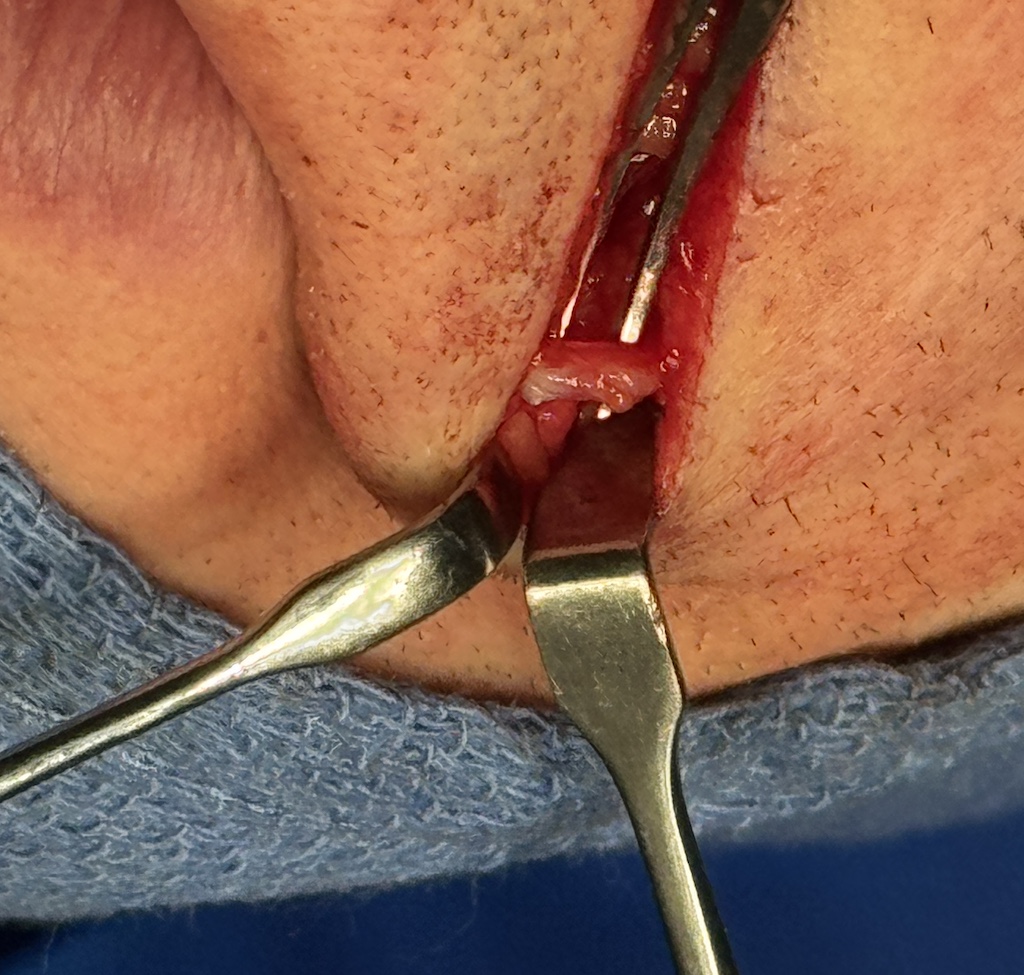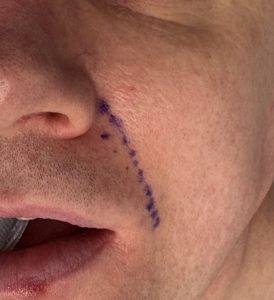Introduction
The facial artery, a branch of the external carotid artery, supplies blood to the lower face, lips, cheeks, and nose.
Its key branches include the labial arteries (to the upper and lower lips) and the angular artery (to the side of the nose and the periorbital region).
Anatomically, the artery runs deep to the buccinator and zygomaticus muscles before becoming more superficial near the corner of the mouth and the nasal ala.
The most common aesthetic deformity involving the facial artery is a pulsatile prominence near its bifurcation lateral to the corner of the mouth. The cause is often idiopathic, though in some cases it may follow trauma or injectable filler injury.
Pain along the course of the facial artery is rare. When it occurs, potential causes include:
- Arterial vasospasm, often accompanied by skin blanching due to vasoconstriction.
- Inflammation or irritation of the arterial wall, producing pain without vasoconstriction.
- Vasculitis from autoimmune disorders, which would typically be evident from the patient’s medical history.
Treatment is typically non-surgical, focusing on NSAIDs or calcium channel blockers.
Surgical intervention, including arterial resection, is reserved for exceptional cases that fail all conservative therapies.
Case Report
A middle-aged man with a long occupational history in a chemical plant presented with bilateral facial artery pain and tightness. The pain followed the course of the facial artery—from its bifurcation lateral to the mouth, upward along the nose, and toward the infraorbital region. Symptoms were constant and more severe on the right side.
There was no visible arterial prominence, skin blanching, or signs of vasospasm. Multiple non-surgical treatments had failed to provide relief.
The patient requested surgical resection of the artery rather than simple ligation, fully understanding and accepting the possibility of a nasolabial fold scar.
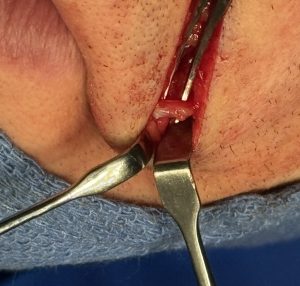
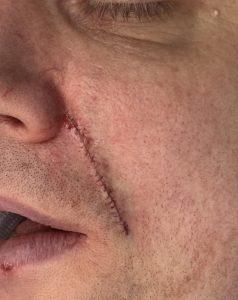
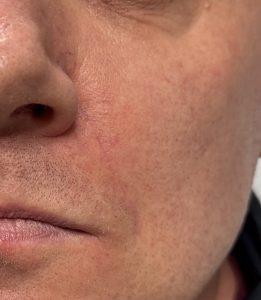
Several months later, he underwent the same procedure on the right, achieving similar symptom relief.
Both nasolabial scars healed excellently, remaining virtually invisible.
Discussion
Chronic pain along the course of the facial artery is exceptionally rare, and surgical resection for this indication is even more uncommon. The nasolabial fold offers the most favorable access for resection, both for anatomic exposure and for cosmetic scar concealment.
This case demonstrates that arterial resection can provide significant symptom relief with minimal aesthetic compromise.
However, it should be emphasized that facial artery resection for pain represents a last-resort (“nuclear”) option, appropriate only for highly motivated patients unresponsive to all medical management.
Key Points
- Chronic inflammation or irritation of the facial artery may cause localized pain along its course.
- Surgical options include arterial ligation or segmental resection.
- The nasolabial fold incision provides excellent access and an inconspicuous scar.
- In this case, arterial resection resulted in durable symptom relief with excellent aesthetic outcome.
Barry Eppley, MD, DMD
World-Renowned Plastic Surgeon? Rare Case: Facial Artery Resection for Chronic Pain

